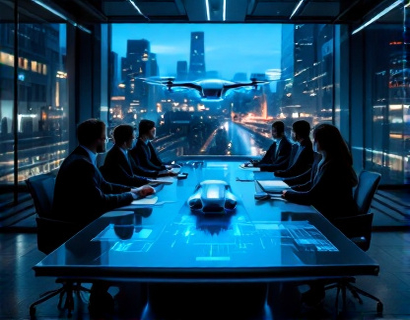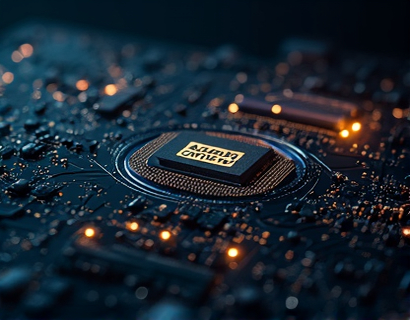Aerospace Technology Breakthroughs: Pioneering Efficiency and Safety Innovations
The aerospace industry stands at the forefront of technological innovation, continuously pushing the boundaries of what is possible in both aviation and space exploration. Recent breakthroughs in aerospace technology have significantly enhanced efficiency and safety, setting a new standard for the industry. This article delves into the latest advancements, exploring how these innovations are transforming the future of aerospace engineering.
One of the most significant advancements in aerospace technology is the development of more efficient propulsion systems. Traditional jet engines have been improved through the integration of advanced materials and aerodynamic designs. For instance, the use of composite materials in engine components has reduced weight while maintaining strength, leading to better fuel efficiency. Additionally, the adoption of open rotor engines, which feature large propellers, has shown promising results in reducing fuel consumption by up to 20% compared to conventional turbofans. These engines are designed to operate at higher efficiencies by utilizing the energy from the core engine to drive the propellers, thus optimizing performance.
Another critical area of innovation is in the realm of electric and hybrid-electric propulsion. Electric propulsion systems offer a cleaner and more sustainable alternative to traditional fossil fuels. Companies are developing electric aircraft that can operate on short to medium distances, with some prototypes already demonstrating impressive performance. Hybrid-electric systems, which combine conventional engines with electric motors, are also being explored for their potential to reduce emissions and improve fuel efficiency. These systems can provide additional power during takeoff and climb, reducing the load on the main engines and thereby saving fuel.
In the domain of materials science, the aerospace industry is witnessing a revolution with the introduction of advanced composites and smart materials. Carbon fiber reinforced polymers (CFRP) have become the material of choice for many aerospace structures due to their high strength-to-weight ratio and corrosion resistance. These materials not only reduce the overall weight of aircraft but also enhance structural integrity. Moreover, the development of shape-memory alloys and self-healing materials is opening new possibilities for adaptive structures that can respond to changing conditions, further improving safety and efficiency.
Avionics and flight control systems have also seen significant advancements. The integration of artificial intelligence (AI) and machine learning (ML) into avionics systems is enabling more autonomous and efficient flight operations. AI algorithms can process vast amounts of data in real-time, optimizing flight paths, predicting maintenance needs, and enhancing situational awareness for pilots. For example, predictive maintenance systems use ML to analyze sensor data and identify potential issues before they become critical, reducing downtime and maintenance costs. Autonomous flight systems are being developed for both commercial and military applications, promising to revolutionize how aircraft are operated.
Safety innovations are equally crucial in the aerospace industry. One of the most notable advancements is the implementation of advanced collision avoidance systems. These systems use a combination of radar, lidar, and AI to detect and avoid potential collisions in real-time. They can alert pilots to nearby aircraft or obstacles and even take control of the aircraft to avoid collisions automatically. This technology is particularly important in densely populated airspace and during adverse weather conditions.
Another safety enhancement is the development of more robust and reliable communication systems. Satellite-based communication networks provide continuous connectivity, enabling real-time data exchange between aircraft and ground control. This not only improves safety by ensuring pilots have access to up-to-date weather and navigation information but also enhances operational efficiency through better coordination and resource management. Additionally, the use of blockchain technology in aviation is being explored for its potential to secure and streamline data transactions, reducing the risk of fraud and errors.
Space exploration is also benefiting from these technological advancements. The development of reusable rockets, such as those by SpaceX, has dramatically reduced the cost of access to space. Reusability is achieved through advanced thermal protection systems and precision landing technologies, allowing rockets to return to Earth and be prepared for subsequent missions with minimal refurbishment. This innovation has the potential to make space travel more frequent and accessible, opening up new opportunities for scientific research, satellite deployment, and even commercial ventures.
In-orbit servicing and maintenance are becoming increasingly important as the number of satellites in orbit grows. Robotic systems designed to perform tasks such as fueling, repairing, and deorbiting satellites are being developed. These robots can extend the lifespan of satellites and reduce space debris, contributing to a safer and more sustainable space environment. The use of AI in these systems allows for autonomous decision-making and precise manipulation, enhancing their effectiveness.
The integration of 3D printing technology in aerospace manufacturing is another transformative trend. Additive manufacturing enables the production of complex components with reduced material waste and shorter production times. This technology is particularly useful for creating lightweight structures and customized parts that are optimized for specific performance requirements. For example, NASA has used 3D printing to produce rocket engine components, demonstrating the potential for cost savings and improved performance.
Environmental considerations are also driving innovation in the aerospace industry. Efforts to reduce the carbon footprint of aviation include the development of sustainable aviation fuels (SAFs) and the exploration of alternative propulsion methods. SAFs, derived from renewable resources such as agricultural waste and algae, can significantly lower greenhouse gas emissions compared to traditional jet fuel. Additionally, hydrogen fuel cells are being investigated for their potential to power aircraft with zero emissions, although challenges related to storage and infrastructure remain.
Lastly, the focus on human factors and ergonomics in aircraft design cannot be overlooked. Advanced simulation and virtual reality (VR) tools are being used to optimize cabin layouts, improve passenger comfort, and enhance crew efficiency. These tools allow designers to test and refine designs in a virtual environment, reducing the need for physical prototypes and accelerating the development process. Ergonomic improvements in control interfaces and display systems also contribute to safer and more efficient flight operations.
In conclusion, the aerospace industry is at a pivotal moment, driven by a wave of innovative technologies that are redefining efficiency and safety. From advanced propulsion systems and materials to AI-driven avionics and sustainable practices, these breakthroughs are setting the stage for a new era of aviation and space exploration. As the industry continues to evolve, the potential for further advancements remains vast, promising a future where travel and exploration are safer, more efficient, and more sustainable.










































